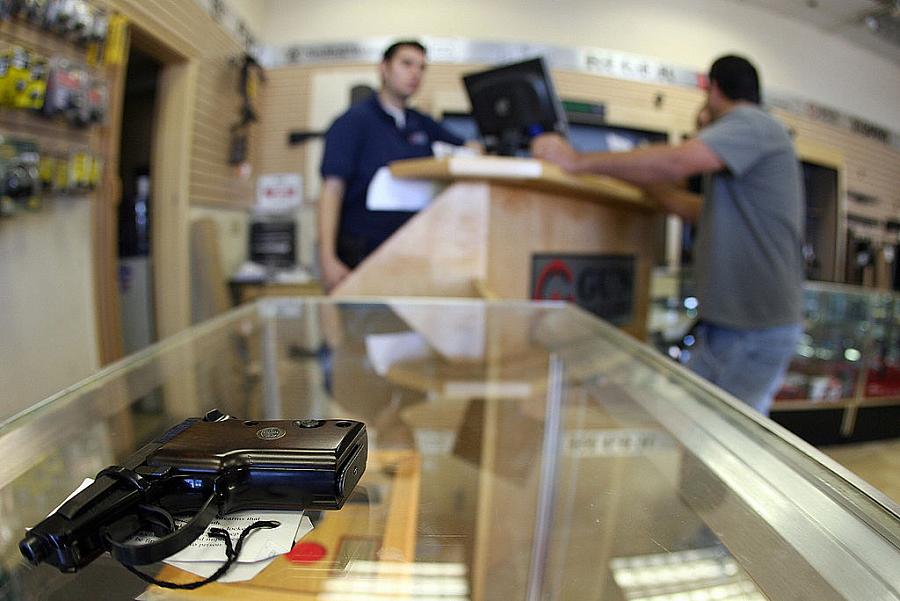The year gun sales went through the roof

(Photo: Gabriel Bouys/AFP via Getty Images)
Regardless of race, gender, or political affiliation, Americans in 2020 bought guns, and many, for the first time. Events like hurricanes and changes to gun laws were known to trigger spikes in gun sales. But 2020’s dystopian trifecta of the COVID-19 pandemic, police shootings and protests, and a controversial presidential election drove U.S. gun sales through the roof.
In my audio documentary, “Locked Down and Loaded: The 2020 Gun Surge and Violence Prevention,” I spoke with first-time gun buyers, firearm industry reps, trainers, and mental health advocates about panic gun buying, and what they were doing to help prevent gun violence and suicides in the wake of surging gun sales.
Through this dive into gun homicide and suicide data, I found that the number of gun homicides in California significantly increased from the previous year, while gun suicides dropped. It is important to note that it was the overall number of suicides by firearm that decreased. A few counties saw increases in suicides, and I did not look more deeply into the possible causes or whether specific demographic groups had different experiences.
I also wanted to find out who was buying guns and what was motivating people to buy them for the first time. Sandina Robbins and I identified as many California gun groups as we could. By phone, email, and social media, we invited them to answer an online survey. Even with our combined efforts to reach folks, it proved extremely difficult to reach people with a range political viewpoints. That was partly due to perceptions about my media outlet’s editorial point of view, which leans progressive, and also because some gun owners are rightfully wary of anyone asking questions about their gun ownership status.
The data we were able to gather was anecdotally interesting and helped to inform the narrative, but the survey proved more valuable in identifying sources to participate in recorded interviews.
Over half of the gun owners we surveyed bought a gun for the very first time in 2020. Whether they were first-time or longtime gun owners, all but a handful of people said they bought a new firearm in 2020 in response to one or more the following events: the onset of the COVID-19 pandemic, the presidential election, Black Lives Matter protests, and anti-mask and anti-lockdown protests, in that order. Only half had ever sought out firearms training from an instructor.
The main data sources I used were the FBI’s National Instant Criminal Background Checks System for national and state firearms background checks from 2015 through 2020, and the California Department of Public Health’s Cal-ViDa vital statistics death data, also for the same period. Before settling on the widely accessible NICS and Cal-ViDa databases, I filed 48 California Public Records Act requests with multiple California county medical examiners and coroners for their most recent death data, as well as the California State Attorney General’s Office and the California Bureau of Firearms for more specific county-level data regarding firearms purchases.
I found that many of the larger county coroners would not respond to numerous attempts to reach them, and when they did respond, it would be to deny the request. Santa Barbara County simply denied the request and my appeal, saying that it was “too big.” However, San Diego County not only fulfilled the death data request but did so in less than 24 hours at the height of the first winter COVID surge.
Not all counties that responded charged a fee. One county said that said there would be a per-house cost. If I agreed to the fee, the deputy said they would send me an invoice and then they could send me the data. I requested that invoice by phone and email for weeks, and never received a response.
At one point, I thought about creating categories of top-10 lists of ways that government agencies avoid following through on record requests — most creative, most likely to induce an exasperated sigh, most likely to drive up your blood pressure.
Beyond these obstacles in filing death records requests, the data that is available on guns in this country is piecemeal and limited. Every state has different rules and methods for collecting gun data. The information that is made available through federal firearms background checks is just a small portion of the total information that is collected at the time a gun is purchased. Until this incomplete patchwork of gun data collection is changed, it will be difficult to gain a more accurate understanding of the public health impacts stemming from the increase in the number of guns in circulation in California and across the country.
That said, my key takeaway from my initial data reporting experience is, first, to be realistic about my capacity when initially scoping the project. Sure, we can be ambitious, but it is okay to begin by being more focused and then expand the scope of reporting for later stories. It was also invaluable to me to identify at least one gun group to allow me a window into their community, their priorities around gun safety and training, and access to their general knowledge about firearms that I had not had until this project.
**
//
